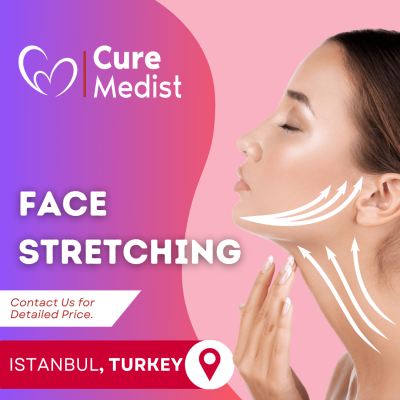Facelift, also known as rhytidectomy, is a cosmetic surgical procedure designed to improve visible signs of aging in the face and neck. It aims to create a more youthful and refreshed appearance by addressing sagging skin, deep folds, and loss of muscle tone. Here’s a detailed overview:
What is a Facelift?
A facelift involves lifting and tightening the underlying facial muscles, removing excess skin, and redistributing fat to restore a smoother, firmer appearance to the face and neck. The procedure can target various areas, including the mid-face, lower face, jawline, and neck.
Types of Facelifts:
- Traditional Facelift:
- Scope: Addresses the lower two-thirds of the face and neck.
- Procedure: Incisions are made along the hairline, around the ears, and possibly under the chin. The underlying muscles and tissues are tightened, excess skin is removed, and the remaining skin is repositioned.
- Mini-Facelift:
- Scope: Targets mild to moderate signs of aging, focusing on the lower face and jawline.
- Procedure: Smaller incisions are made around the ears, with less extensive tissue manipulation compared to a traditional facelift.
- Mid-Facelift:
- Scope: Focuses on the middle part of the face, including the cheeks and under-eye area.
- Procedure: Incisions are typically made in the lower eyelid or inside the mouth, lifting and repositioning the fat and tissues of the cheeks.
- Neck Lift:
- Scope: Specifically targets the neck and jawline to address sagging skin and muscle bands.
- Procedure: Incisions are made around the ears and possibly under the chin, tightening the neck muscles and removing excess skin.
Procedure:
- Initial Consultation:
- Assessment: The surgeon evaluates the patient’s overall health, skin quality, facial structure, and specific concerns.
- Discussion: The patient discusses their goals, and the surgeon explains the procedure options, potential risks, and recovery process.
- Pre-Operative Preparations:
- Anesthesia: The procedure is typically performed under general anesthesia or local anesthesia with sedation.
- Marking: The surgeon marks the incision sites and areas to be addressed.
- Surgery:
- Incisions: The location and length of incisions depend on the type of facelift. Incisions are made in inconspicuous locations to minimize visible scarring.
- Tissue Repositioning: The underlying tissues and muscles are lifted and tightened. Excess fat may be sculpted or removed.
- Skin Re-draping: The skin is re-draped over the newly repositioned contours, and excess skin is trimmed away.
- Closure: Incisions are closed with sutures or skin adhesives. Drains may be placed to remove excess fluids.
Recovery:
- Immediate Post-Operative Care:
- Monitoring: The patient is monitored in a recovery area until stable.
- Dressings: Bandages are applied to minimize swelling and bruising.
- Short-Term Recovery:
- Swelling and Bruising: These are common and typically subside within a few weeks.
- Pain Management: Pain and discomfort are managed with prescribed medications.
- Activity Restrictions: Patients are advised to avoid strenuous activities, heavy lifting, and bending over for several weeks.
- Follow-Up Appointments: Regular check-ups are scheduled to monitor healing, remove sutures, and address any concerns.
- Long-Term Recovery:
- Scarring: Incisions are strategically placed to minimize visible scarring, which fades over time.
- Final Results: The final results may not be fully apparent until several months after surgery, as swelling gradually decreases.
Benefits of a Facelift:
- Improved Facial Contours: Restores a more youthful appearance by tightening sagging skin and underlying tissues.
- Enhanced Jawline and Neck: Creates a more defined jawline and smooths the neck area.
- Long-Lasting Results: Provides more enduring results compared to non-surgical treatments.
Suitability:
- Good Candidates: Individuals in good overall health, non-smokers, and those with realistic expectations. Ideal candidates have moderate to severe signs of facial aging.
- Stable Weight: Candidates should have a stable weight, as significant weight fluctuations can affect the results.
- Good Skin Elasticity: Some degree of skin elasticity is necessary for optimal results.
Summary
A facelift (rhytidectomy) is a comprehensive cosmetic procedure designed to rejuvenate the face and neck by addressing sagging skin, deep folds, and loss of muscle tone. Consulting with a board-certified plastic surgeon is essential to discuss individual goals, potential risks, and the best approach for achieving the desired results. This ensures that the procedure is tailored to meet the patient’s specific aesthetic needs while minimizing risks.






